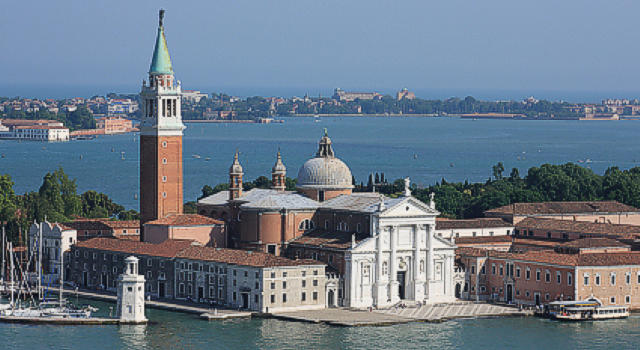Andrea Palladio
Image may be NSFW.
Clik here to view.
Born: 30 November 1508, Padova, Republic of Venice
Died: 19 August 1580 (aged 71) Maser, near Treviso
Nationality: Italian
Brief Biography
In Padua he gained his first experiences as a stonecutter in the sculpture workshop of Bartolomeo Cavazza da Sossano, who is said to have imposed particularly hard working conditions. At the age of sixteen he moved to Vicenza where he would reside for most of his life. Here he became an assistant in the Pedemuro studio, a leading workshop of stonecutters and masons. He joined a guild of stonemasons and bricklayers. He was employed as a stonemason to make monuments and decorative sculptures. These sculptures reflected the Mannerist style of the architect Michele Sanmicheli.
Perhaps the key moment that sparked Palladio's career was being employed by the Humanist poet and scholar, Gian Giorgio Trissino, from 1538 to 1539. While Trissino was reconstructing the Villa Cricoli, he took interest in Palladio's work. Trissino was heavily influenced by the studies of Vitruvius, who later influenced Palladio's own ideals and attitudes toward classical architecture. As the leading intellectual in Vicenza, Trissino stimulated the young man to appreciate the arts, sciences, and Classical literature and he granted him the opportunity to study Ancient architecture in Rome. It was also Trissino who gave him the name by which he became known, Palladio, an allusion to the Greek goddess of wisdom Pallas Athene and to a character of a play by Trissino. Indeed the word Palladio means Wise one. After Trissino's death in 1550, Palladio benefited from the patronage of the Barbaro brothers, Cardinal Daniele Barbaro, who encouraged his studies of classical architecture and brought him to Rome in 1554, and his younger brother Marcantonio Barbaro. The powerful Barbaros introduced Palladio to Venice, where he finally became "Proto della Serenissima" (chief architect of the Republic of Venice) after Jacopo Sansovino. In addition to the Barbaros, the Corner, Foscari, and Pisani families supported Palladio's career.
Andrea Palladio began to develop his own architectural style around 1541. The Palladian style, named after him, adhered to classical Roman principles he rediscovered, applied, and explained in his works.
Aside from Palladio's designs, his publications contributed to Palladianism. During the second half of his life, Palladio published many books, above all, I Quattro Libri dell'Architettura (The four books of architecture, Venice, 1570). Palladio is most known for his designs of villas and palaces as well as his books.
He was a chief architect of the palace of republic of venice, at the same time, Mimar Sinan was the chief architect of the palace of ottoman empire,
He designed; villas, palaces, and churches, and the style he applied in his architecture became later known as palladian architecture
Famous Works:
Villa Capra 'La Rotonda'
Image may be NSFW.
Clik here to view.
Palazzo Civena
Image may be NSFW.
Clik here to view.![]()
Church of San Giorgio Maggiore
Image may be NSFW.
Clik here to view.![]()
Image may be NSFW.
Clik here to view.

Born: 30 November 1508, Padova, Republic of Venice
Died: 19 August 1580 (aged 71) Maser, near Treviso
Nationality: Italian
Brief Biography
In Padua he gained his first experiences as a stonecutter in the sculpture workshop of Bartolomeo Cavazza da Sossano, who is said to have imposed particularly hard working conditions. At the age of sixteen he moved to Vicenza where he would reside for most of his life. Here he became an assistant in the Pedemuro studio, a leading workshop of stonecutters and masons. He joined a guild of stonemasons and bricklayers. He was employed as a stonemason to make monuments and decorative sculptures. These sculptures reflected the Mannerist style of the architect Michele Sanmicheli.
Perhaps the key moment that sparked Palladio's career was being employed by the Humanist poet and scholar, Gian Giorgio Trissino, from 1538 to 1539. While Trissino was reconstructing the Villa Cricoli, he took interest in Palladio's work. Trissino was heavily influenced by the studies of Vitruvius, who later influenced Palladio's own ideals and attitudes toward classical architecture. As the leading intellectual in Vicenza, Trissino stimulated the young man to appreciate the arts, sciences, and Classical literature and he granted him the opportunity to study Ancient architecture in Rome. It was also Trissino who gave him the name by which he became known, Palladio, an allusion to the Greek goddess of wisdom Pallas Athene and to a character of a play by Trissino. Indeed the word Palladio means Wise one. After Trissino's death in 1550, Palladio benefited from the patronage of the Barbaro brothers, Cardinal Daniele Barbaro, who encouraged his studies of classical architecture and brought him to Rome in 1554, and his younger brother Marcantonio Barbaro. The powerful Barbaros introduced Palladio to Venice, where he finally became "Proto della Serenissima" (chief architect of the Republic of Venice) after Jacopo Sansovino. In addition to the Barbaros, the Corner, Foscari, and Pisani families supported Palladio's career.
Andrea Palladio began to develop his own architectural style around 1541. The Palladian style, named after him, adhered to classical Roman principles he rediscovered, applied, and explained in his works.
Aside from Palladio's designs, his publications contributed to Palladianism. During the second half of his life, Palladio published many books, above all, I Quattro Libri dell'Architettura (The four books of architecture, Venice, 1570). Palladio is most known for his designs of villas and palaces as well as his books.
He was a chief architect of the palace of republic of venice, at the same time, Mimar Sinan was the chief architect of the palace of ottoman empire,
He designed; villas, palaces, and churches, and the style he applied in his architecture became later known as palladian architecture
Famous Works:
Villa Capra 'La Rotonda'
Image may be NSFW.
Clik here to view.

Palazzo Civena
Image may be NSFW.
Clik here to view.

Church of San Giorgio Maggiore
Image may be NSFW.
Clik here to view.
